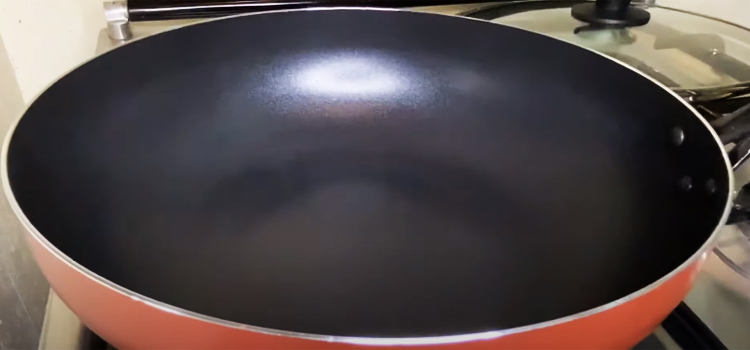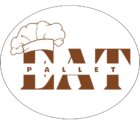Last Updated on July 14, 2024 by Shari Mason
Many cooking enthusiasts consider non-stick pans to be a kitchen essential due to their superior cooking surfaces, often choosing them over traditional pans.
But sometimes, it can be tricky to know if it’s non-stick or not. In this article, we’ll help you how to tell if a pan is non-stick and what you should look for when buying a non-stick pan. Read on.
How To Know If A Pan Is Non-Stick


Compared to other pans, you can notice a non-stick pan’s grainy look but smooth texture, lightweight, and visible dark coating style. Its stylish appearance makes it more appealing in the kitchen.
The Teflon coating in the non-stick pan creates a scratch-less texture so you can cook a healthy meal with less oil while making cleaning easier.
Indicators To Look For
Smooth & Shiny Surface
One of the main signs that your pan is nonstick is its smooth surface and shiny, scratch-less look finish. Its smooth non-stick surface allows cooking food even without using oil.
Also, non-stick pans will have an almost frictionless surface. So, cleaning smooth, shiny non-stick pans will be easier than most rough, textured pans.
Read: Are Non-Stick Pans Dishwasher Safe?
Coated
Nonstick pans must have a protective coating on their metal surface. Cookwares with non-stick surfaces are coated with polytetrafluoroethylene, commonly known as Teflon.
Teflon coating serves as the barrier that helps prevent food from sticking to the pan. This coating is also commonly used as fabric protectors, wire coatings, and in different cookware.
However, nonstick coatings containing harmful chemical PFOA were associated with safety concerns. So before buying, do a quick search and look for a PFOA-free pan.
Read: How To Cook Fillet Mignon In A Non-Stick Pan?
Appearance
For most brands, the first thing you will notice in a non-stick pan is its dark gray coating on the inside metal surface, while the metal on the outside is shiny.
The dark gray color is a result of its anodization process. The process hardens the coating on the aluminum surface, giving a dark color to the nonstick pan.
Weight
Compared with cast iron pans, another noticeable difference is non-stick pans are lighter in weight. It’s made with aluminum with Teflon coating, and a heavier pan is more likely a cast iron.
Features of Non Stick Pans
Easy To Clean & Cook In
Cooking with a non-stick pan is more convenient than using ordinary pans. You don’t have to worry about the food sticking or possible burnt stains at the bottom.
Its smooth coating prevents food from sticking and makes cleaning easier. You don’t have to scrub it hard to clean all the residues in the non-stick pans.
We recommend hand washing it. Using soft sponges or cloths is enough to clean your non-stick pan.
Does Not Need Oil
Cooking healthy meals without a drop of oil or with just less oil is possible in non-stick pans. It’s one of the biggest advantages of using non-stick pans.
These pans are a great choice for those who want a healthy lifestyle. But if you try to cook food in your new pan, and the food sticks even with oil—you got the wrong non-stick pan.
“My favorite was “Teflon mind,” where you imagine your brain being like nonstick cookware: negative thoughts just slide right off. Just.”
– Car Marnell, Journalist
Non-stick pans have a limited lifespan; with proper care and maintenance, your pans could last for years.
But how long does a non-stick pan work? It typically lasts around five years. If you’ve been using it for more than five years and it wears off and doesn’t cook evenly, it’s time to change it.
Scratch Resistant
All non-stick pans are scratch resistant. However, we do not suggest using metal utensils to protect their coating. The sharp edges of these metals could damage the non-stick pan.
Modern Style
Modern-style non-stick pans have a dark-color style with a comparatively uneven and grainy look. Its scratchless texture makes non-stick pans more stylish and presentable in the kitchen.
Uniform Distribution of Heat
Most non-stick pan brands have a uniform heat distribution. You can easily cook on low or medium heat instead of high heat.
The even distribution of heat makes it even more suitable for cooking. It can cook food evenly without burning it.
However, don’t put your non-stick pans at 300 degrees Celcius or above because extreme heat could melt the nonstick coating.
Tips & Tricks When Using Non-Stick Pans


- Use wooden or silicone utensils. When cooking in a non-stick pan, never use metal or steel utensils to maintain its non-stick coat layer.
- Avoid overheating your non-stick pan. Overheating Teflon might release Teflon fumes, and exposure to toxic fumes can cause fume fever, which occurs head and body aches.
- Wash it gently. You never want to scrub your pan with steel wool. Gently wash the residuals using a soft sponge.
- Ditch your non-stick pan. As mentioned earlier, nonstick pans have a limited lifespan. If the coating layer is wear-off and visibly deteriorating, it’s time to replace your pans.
FAQs
u003cstrongu003eWhat makes a pan non-stick?u003c/strongu003e
A protective and non-stick coating material called Teflon makes a pan non-sticking. Teflon is also known as polytetrafluoroethylene [u003ca href=u0022https://www.britannica.com/science/polytetrafluoroethyleneu0022 target=u0022_blanku0022 rel=u0022noreferrer noopeneru0022u003e1u003c/au003e], a synthetic chemical made of fluorine and carbon.
u003cstrongu003eIs it safe to cook on a non-stick pan?u003c/strongu003e
Yes, it is safe to cook on a non-stick pan. However, you should look for that PFOA-free (Perfluorooctanoic acid) non-stick cookware. u003cbru003eu003cbru003eA non-stick pan that contains PFOA might contain chemicals harmful to the body. It has been linked to medical problems such as cancer and chronic kidney disease. [u003ca href=u0022https://www.cancer.org/healthy/cancer-causes/chemicals/teflon-and-perfluorooctanoic-acid-pfoa.htmlu0022 target=u0022_blanku0022 rel=u0022noreferrer noopeneru0022u003e2u003c/au003e]
Bottom Line
A non-stick pan should be smooth in texture with a protected coating, commonly dark in color. It is also lighter than other pans, more convenient to use, and easier to clean.
You don’t need too much oil in cooking, which is perfect for a healthy lifestyle. But avoid overheating your pan or putting it at high temperatures to maintain the protective coating.
References:
- https://www.britannica.com/science/polytetrafluoroethylene
- https://www.cancer.org/healthy/cancer-causes/chemicals/teflon-and-perfluorooctanoic-acid-pfoa.html
- How to Cancel a Pizza Hut Order? Quick & Easy Guide - July 26, 2024
- How Long Do I Cook a DiGiorno Pizza? Perfect Timing Tips - July 26, 2024
- What Kind of Advertising Do Restaurants Use? - July 24, 2024

